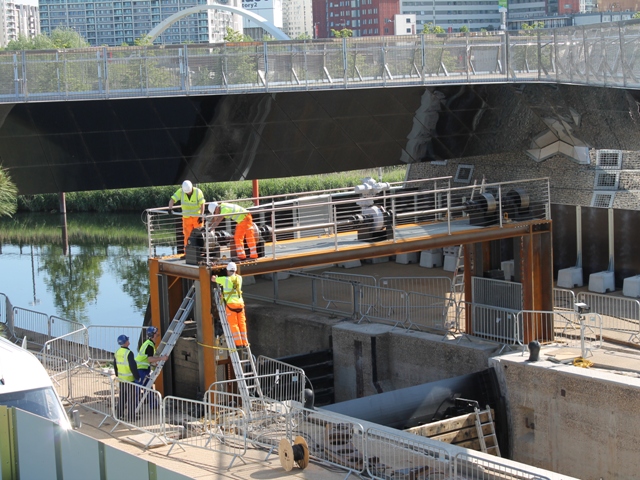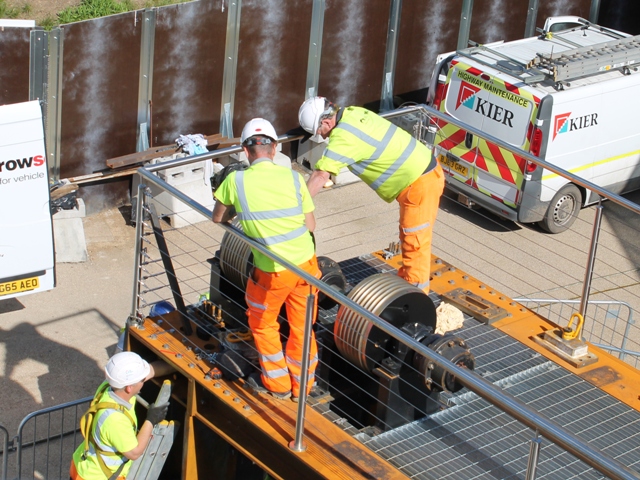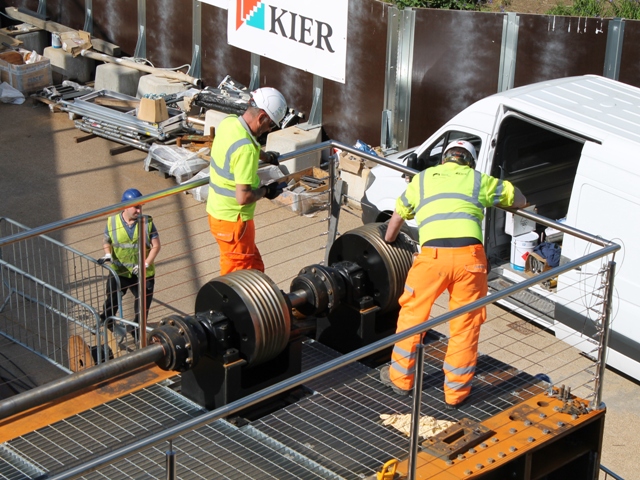With all the pieces of the puzzle in place - gates, gantries, cables, counterweights - the final step was to link them all together into a working mechanism.
The gates were fixed to the brackets on the sides of the lock with steel pins which act as the hinge. These pins are covered with an advanced self-lubricating nylon compound which means they will not need greasing.
The counterweights were positioned over the pits with wire cables running to the winch. A second set of cables run from the winch to the lifting arms of the gates. When the winch starts to turn, the cable drum winds up the cable from the gate and at the same time winds out cable to the weights so they can drop into the pit.






